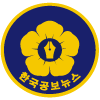[사진 설명: 디나 파흐미 엘 루비 작가가 서울 이집트대사관 특별전시장에서 한국 기자와 인터뷰를 진행하고 있다. 그녀의 작품 속에 담긴 나일강과 한강의 만남이 두 문명의 교류를 상징한다.]
서울 이집트대사관 특별전시실에서 6월 16일, From Nile to Han전시의 주인공인 디나 파흐미 엘 루비(Dina Fahmy El Rouby) 작가가 한국 언론과의 첫 단독 인터뷰를 가졌다.
이집트-한국 수교 30주년을 기념하는 이번 특별전의 숨은 이야기와 문화외교에 대한 작가의 깊은 철학이 공개됐다.
"처음 이 전시를 제안받았을 때, 대사님께서 한국의 ‘한강의 기적’ 이야기를 들려주셨습니다. 이집트인에게 나일강이 삶의 중심인 것처럼, 한국인에게 한강이 얼마나 중요한지 잘 알고 있었죠. 그래서 자연스럽게 두 강을 연결하는 전시 주제가 떠올랐습니다." 엘 루비는 전시 제목의 탄생 배경을 이렇게 설명했다.
이번 전시를 기획하며 그녀는 단순한 예술 작품을 넘어 양국 문명의 깊은 문화적 대화를 시도하고자 했다.
상징적 이미지와 전통 서예, 문화적 내러티브가 어우러진 45점 이상의 작품 속에는 고대 이집트의 영원성과 한국의 역동성이 섬세하게 교차한다. 특히 증강현실(AR) 기술을 접목해 관람객이 작품 속으로 몰입할 수 있는 새로운 예술적 경험을 제공했다.
엘 루비는 "예술은 공감을 이끌어내고, 국가 간 협력의 촉매가 될 수 있습니다. 저는 문화 친선대사로서 한국 관객들이 이집트 예술에 대해 더 많이 알고, 또 두 나라가 예술을 매개로 더 긴밀히 소통하길 바랍니다"라며 자신의 사명을 강조했다.
향후 양국의 문화외교에 대해 묻자, 그녀는 단발성 행사에 그치지 않겠다는 포부를 밝혔다. "9월쯤 한국 여성 예술가들을 이집트에 초청해 공동 전시회를 열고 싶습니다. 특히 여성 예술인 간의 교류를 통해 지속적이고 실질적인 협력의 장을 만들고자 합니다.“
작품 중 가장 애착이 가는 작품을 묻는 질문에는 미소를 지으며 이렇게 답했다. "작품은 모두 소중한 자식과도 같아 쉽게 고르기 어렵습니다. 다만 이집트의 전통문화와 현대문화를 연결하는 작품들엔 늘 더 많은 정성을 쏟게 됩니다.“
특히 한국적 이미지가 가미된 4점의 작품에 대해서는 보다 상세한 설명을 덧붙였다.
"예를 들어, 퇴강기에서 영감을 얻은 두 작품은 양국의 전통 복식에서 한복과 이집트 의상이 의외로 유사하다는 점에서 착안했습니다. 이런 비형식적 유사성은 의상뿐 아니라 음식, 문화, 예술 등 다양한 분야에서 발견됩니다.
또 파란색 배경에 붉은색 물결이 스며든 작품은 고대 시트라이 민족의 여성적 지혜를 상징합니다. '말을 많이 하는 사람은 믿지 마라, 자신의 직업을 사랑하지 않는 사람과는 대화하지 마라'는 가르침을 담고 있습니다.“
엘 루비 작가는 이번 전시를 통해 "예술이야말로 양국 국민을 하나로 모으고, 문화 간 소통과 협력의 가교 역할을 할 수 있다"는 메시지를 재차 강조하며 인터뷰를 마쳤다.
[CULTURE & DIPLOMACY | A Dialogue of Rivers: Dina Fahmy El Rouby on Art as a Bridge Between Egypt and Korea]
By [MAN KYU KIM]
[Photo Caption: Artist Dina Fahmy El Rouby shares the inspiration behind her 'From Nile to Han' exhibition with a Korean journalist at the Egyptian Embassy in Seoul, offering a rare cultural bridge between two ancient civilizations.]
On a humid June afternoon in Seoul, inside the dignified halls of the Egyptian Embassy, I found myself seated across from Dina Fahmy El Rouby—internationally acclaimed artist, cultural diplomat, and the creative force behind From Nile to Han, an exhibition marking the 30th anniversary of Egypt-Korea diplomatic relations. What unfolded was not just an interview, but an intimate reflection on the profound role art plays in connecting civilizations.
"When His Excellency the Ambassador approached me with the idea for this exhibition," El Rouby began, her voice imbued with quiet passion, "he spoke of Korea’s ‘Miracle on the Han River.’ For us Egyptians, the Nile is more than a river—it is our cradle of life. In hearing about the Han, I sensed an almost spiritual symmetry. That connection became the genesis of this exhibition.“
Indeed, From Nile to Hanis far more than a cultural gesture; it is an intricate meditation on parallel histories, resilience, and rebirth. Across 45 works, El Rouby masterfully weaves the eternal symbols of ancient Egypt with the energetic pulse of modern Korea.
Layers of calligraphy, abstract forms, and cultural archetypes intermingle—brought further to life through augmented reality that allows visitors to step inside her narrative.
“Art is a universal language of empathy,” she reflected. “It dissolves the distances between people. My hope is for Korean audiences to engage deeply with Egyptian culture and, in doing so, recognize the echoes of their own heritage.”
But El Rouby’s vision does not end with this singular exhibit. “I see this as only a beginning. I am currently planning to invite Korean women artists to Egypt this autumn for a joint exhibition. Sustained, authentic exchange—not isolated events—is what true cultural diplomacy requires.”
When asked if any particular work held a deeper resonance for her, she smiled, hesitant, as though asked to choose among her own children. “Every piece carries my heart. Yet those that interlace Egypt’s ancient traditions with our modern identity always draw me a bit closer.”
She gestured toward several paintings that blend Korean motifs with Egyptian iconography. “For instance, some of these reflect the colors of the Korean Taegukgi. Even the hanbok, your traditional attire, holds uncanny similarities to certain Egyptian ceremonial garments. These aren’t mere coincidences—they hint at shared human archetypes that transcend continents.”
One arresting piece features deep crimson waves against an azure canvas—a tribute to the Si tribe, an ancient Egyptian symbol of feminine wisdom.
“The Si women taught: ‘Do not trust the one who speaks too much. Do not engage with those who lack love for their craft.’ That wisdom feels timeless and deeply relevant still today.”
As our conversation neared its end, El Rouby returned to her central conviction: “Art does not require translation. It has the extraordinary power to convene people across time, across geography, across politics. In a world divided too often by conflict and misunderstanding, exhibitions like this remind us of our shared humanity.”
Stepping out into the busy Seoul streets after our dialogue, I was struck not only by the vivid imagery of her art, but by the quiet audacity of her vision: that perhaps rivers as distant as the Nile and Han are, in truth, never as far apart as they seem.
mankyu1007@naver.com
본 기사는 한국공보뉴스와의 계약없이 전문 또는 일부의 전재를 금합니다.
뉴스미란다원칙 취재원과 독자에게는 한국공보뉴스에 자유로이 접근할 권리와 반론.정정.추후 보도를 청구할 권리가 있습니다.
고충처리인(kpnnews@naver.com) / 전화 : 1588-9974
- 정치/경제/사회
- 교육/문화/관광
- 보건복지/방재/환경
- 농수축산/산업/개발
- 스포츠/연예
- 읍면동/통신원
